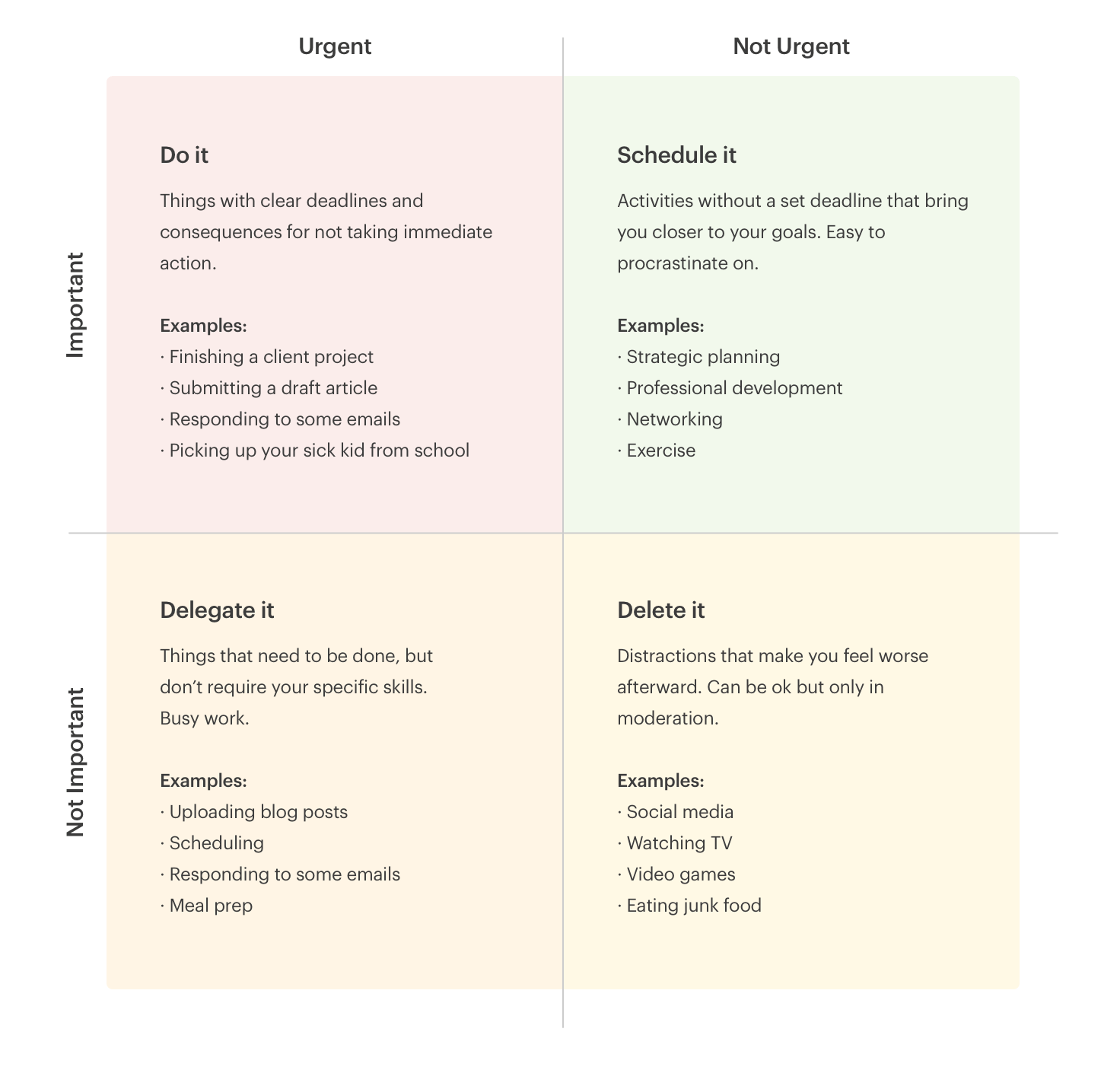
Time Management - plangroup. student+
- Published on
- body of knowledge minor · 3 min read
Time Management
Because I wanted to learn an awful lot this semester, it was very important to have a tight schedule. Dividing the time and setting priorities was very important. Unfortunately, I could not do this alone so I joined the student+ plangroup. This plangroup is an after-school activity where you get tips on how to achieve your goals and set priorities.
During the lessons, different models were used. For me, the eisenhower model was the best fit with my goals.
Eisenhower model
Eisenhower's productivity strategy is known as the Eisenhower Model. It is a simple way to be smart about your life goals, your (long-term) planning and your (daily) tasks. It's all about prioritizing, making decisions and the difference between urgent and important.
Urgent as well as important. (Do it)
Tasks that you perform as quickly as possible because otherwise (big) problems will arise. Really urgent ad hoc tasks also fall under this category. For a regular office worker this category of tasks should not take up more than 5% of the task list and time. They are your so-called 'Most Important Tasks
Important, but not urgent. (Schedule it)
Tasks that you schedule to be done at a later time. These are the tasks that, as a time management master, you want to spend 95% of your day on.
Urgent, but not important. (Delegate it)
Tasks you delegate to others if possible.
Neither urgent nor important. (Delete it)
Tasks you cross off your list, especially during busy periods where higher priorities demand your attention.

Prioritization of tasks by urgency and importance results in 4 quadrants with different work strategies:
- Important and urgent: do it now!
- Important but not urgent: put on your to do list!
- Urgent but not important: delegate!
- Not urgent not important: forget; comes later!
How to use
- Putting things to-do on a list frees your mind. But always question what is worth doing first.
- Try limiting yourself to no more than eight tasks per quadrant. Before adding another one, complete the most important one first. Remember: It is not about collecting but finishing tasks.
- You should always maintain only one list for both business and private tasks. That way you will never be able to complain about not having done anything for your family or yourself at the end of the day.
- Do not let you or others distract you. Do not let others define your priority. Plan in the morning, then work on your stuff. And in the end, enjoy the feeling of completion.
- Finally, try not to procrastinate that much. Not even by over-managing your to-dos.
Thank you for reading this topic about Time Management - plangroup. student+ I hope it was interesting any feedback is always welcome. Hope to see you in the next topic,
Byee! 👋🍺
TL;DR How to manage time and make priorities